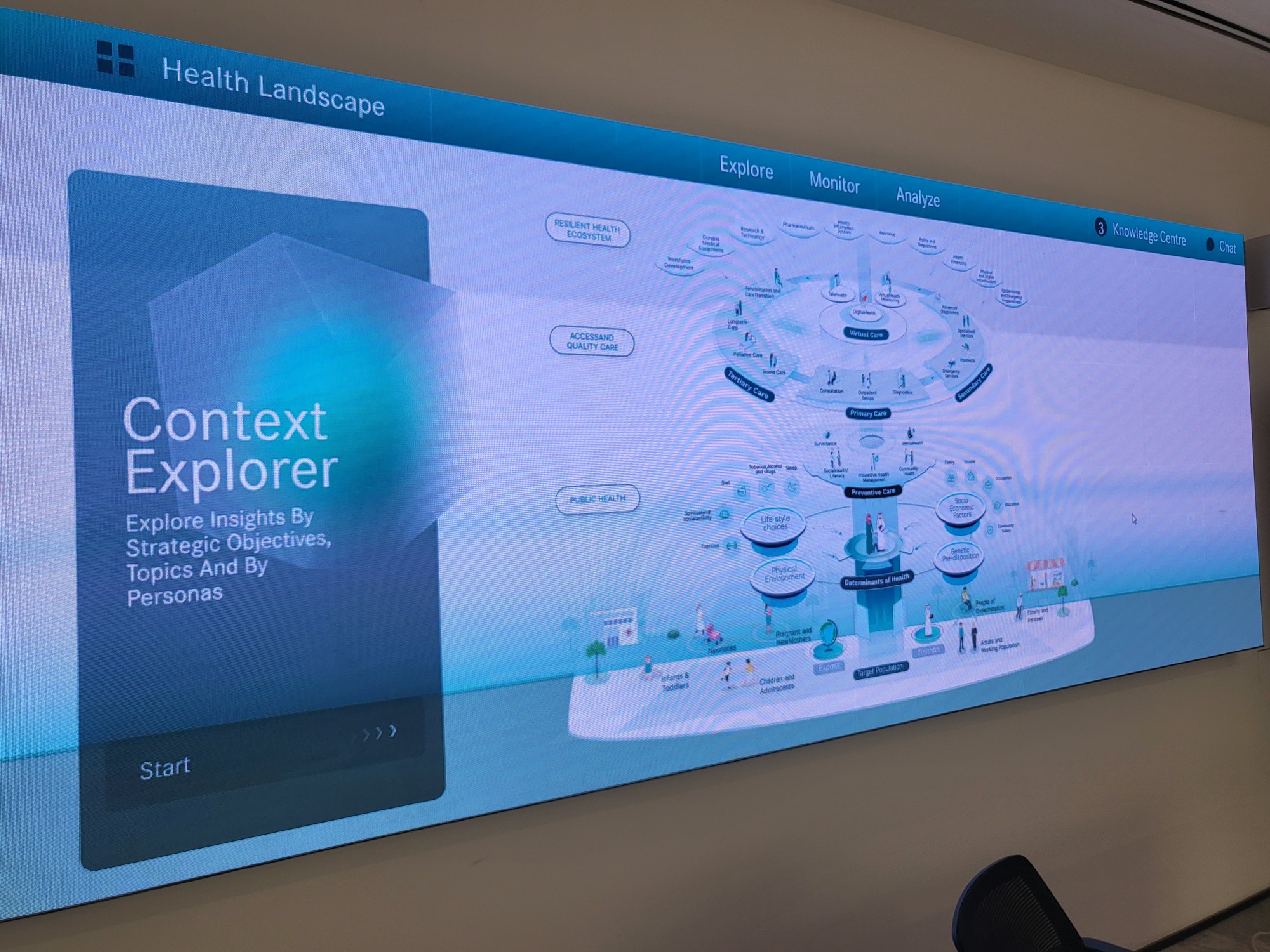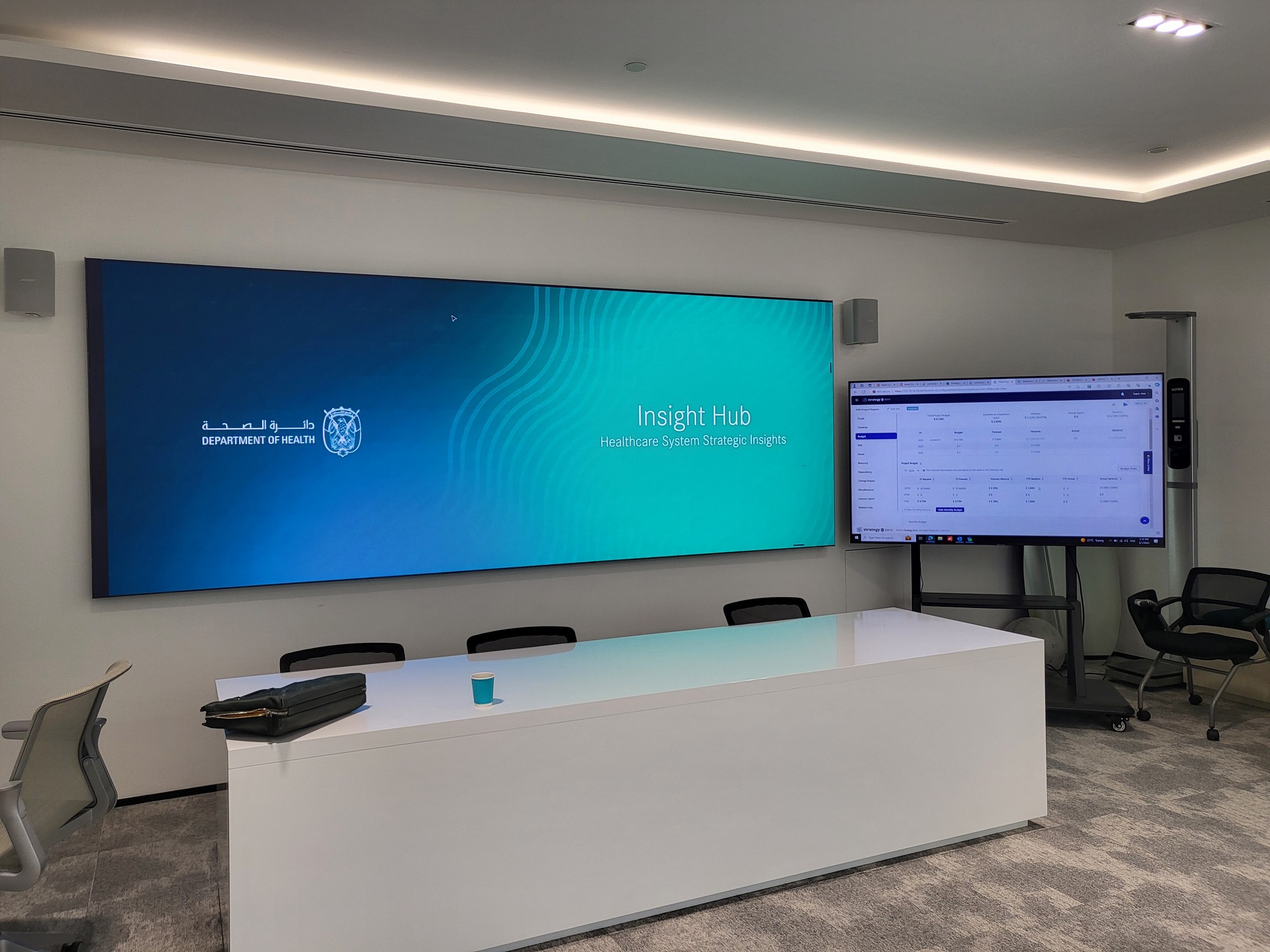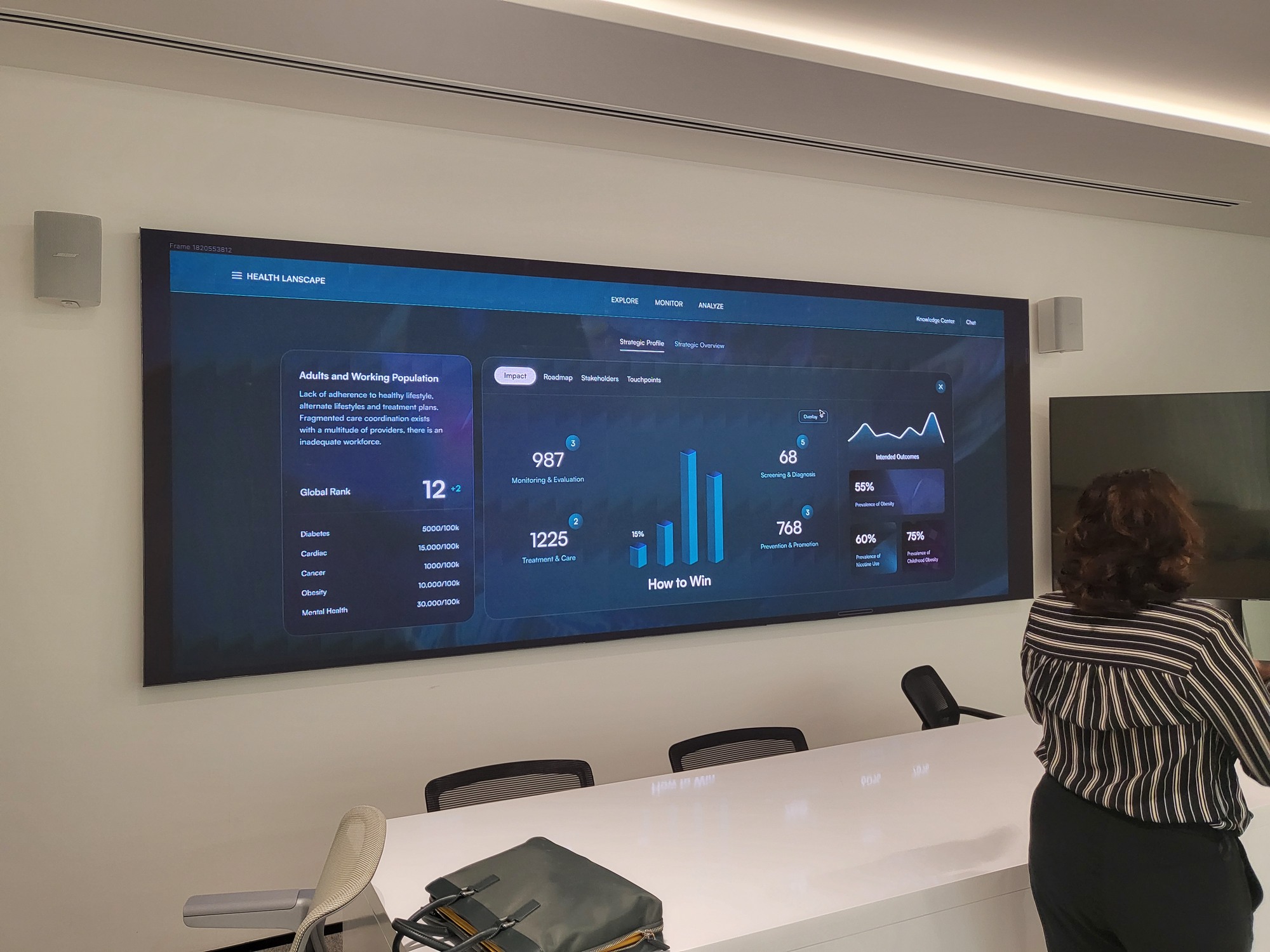

An immersive data visualization platform that helps government leaders plan and manage national healthcare strategies — transforming how policy and systems thinking are discussed and understood.
How might we create a more engaging, intuitive way to discuss, visualize, and collaborate on complex national strategies — especially for time-constrained decision-makers?
I led the early interaction and interface design, shaping the product’s structure and concept. I collaborated with a multidisciplinary team that included UI designers, motion artists, and illustrators.
The product had no clear precedent, so we adopted a non-linear, exploratory design process using rapid prototyping to visualize abstract strategy concepts. We performed frequent usability tests with senior executives. Iterative, agile cycles were done based on feedback and real-world usage.
Executives had limited time and low tolerance for complexity. The visual system needed constant iteration due to its experimental nature. The product had to scale to massive displays — traditional design tools struggled with rendering ultra-high-resolution assets and dense data layers.
We created an interactive strategy room experience where leaders could overlay data across different layers of their ecosystem. They could visualize interdependencies between operations, policy, and external environments. They engaged with strategy in a spatial, immersive way rather than through slides or spreadsheets and meetings.





The interactive experience was successfully deployed at the UAE Department of Health for testing. High stakeholder interest led to replication for the Australian Department of Health. This product marked a shift in how national strategic planning is communicated and explored.
To integrate performance tracking to measure real-world policy outcomes. To continue iterating on the experience with data from pilot deployments. To expand to new domains beyond healthcare for broader national strategy use.